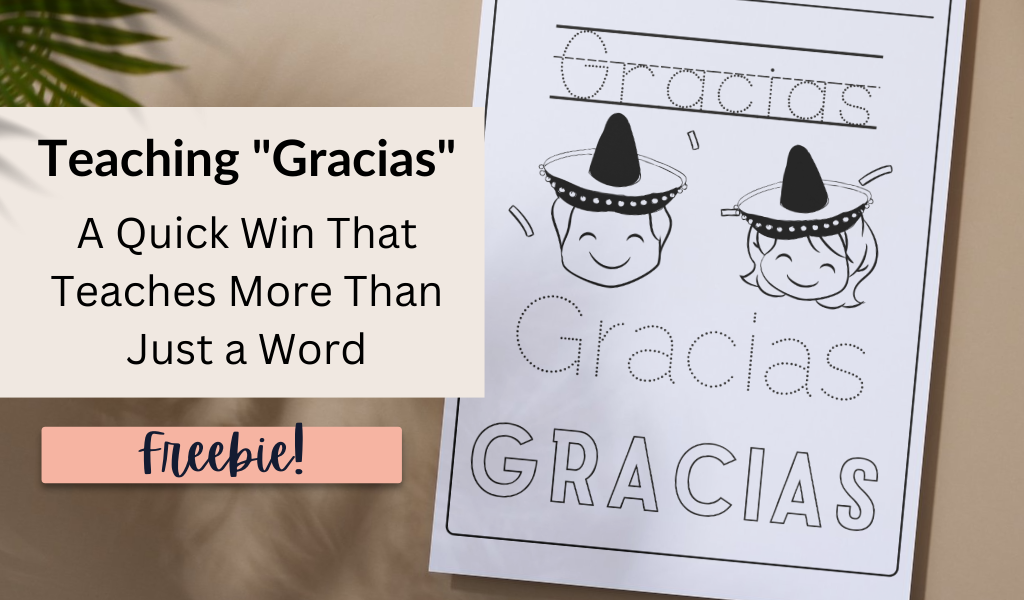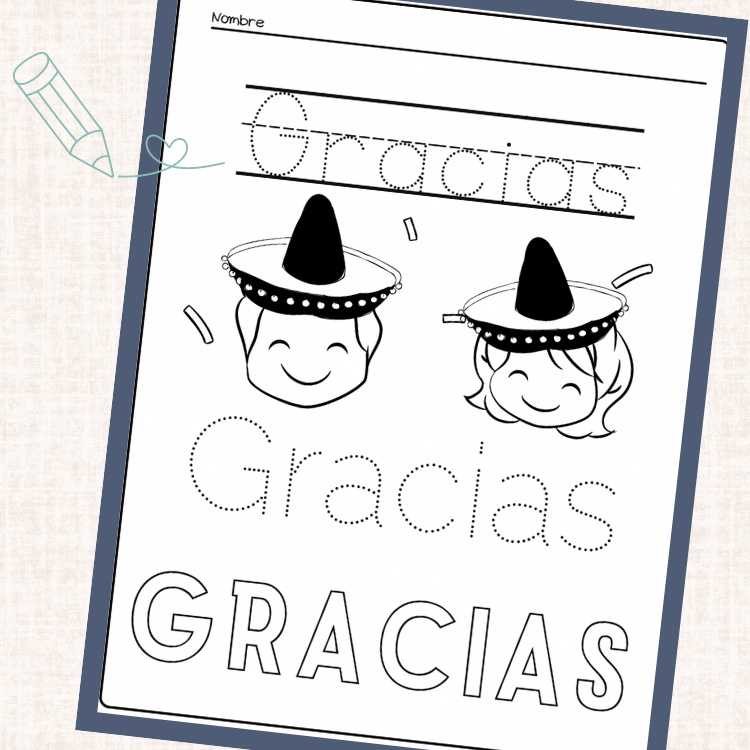Hey there, Joyful Journey Makers! One of the first words I teach my students when learning Spanish is “gracias”—and not just because it’s easy to say. Teaching “gracias” offers students a quick win that boosts their confidence and introduces them to one of the most important lessons: gratitude. With this simple word, students can experience success early on, while also learning how to express thanks in a new language.
In this post, I’ll share why starting with “gracias” sets a positive tone for learning, and I’ll introduce my FREE Gracias Activity Page to help your students practice using their fine motor skills while learning an important word. Let’s dive in!
Why "Gracias" is the Perfect First Word
The Science Behind Gratitude and Learning
There’s more to gratitude than just being polite. Research shows that practicing gratitude has significant cognitive benefits, including:
- Improved Mental Well-Being: Gratitude boosts positive emotions and reduces stress, which helps students feel more comfortable and open to learning.
- Enhanced Memory: Gratitude practices have been linked to improved memory function. When students express thanks, they engage in reflection, which activates the brain’s hippocampus—the area responsible for memory.
- Social Bonding: Teaching students to express gratitude strengthens their social connections and helps build a supportive classroom community. This sense of belonging makes students feel more secure, allowing them to take creative risks in their learning.
Get Your FREE Resource: Gracias Activity Page for Fine Motor Practice
Ready to get your students practicing “gracias” in a fun, creative way? My Gracias Activity Page is the perfect way to combine language learning with fine motor skill development. Plus, it’s FREE!
What’s Included:
- Coloring and Tracing: The activity page features the word “gracias” for students to trace and color, helping them practice writing while reinforcing their new vocabulary. This supports the development of fine motor skills while keeping the lesson playful.
- Name Section: Students can personalize their page by writing their names at the top. This encourages ownership of their work and helps them take pride in their learning.
How to Use This Activity in Your Classroom
- Lesson Warm-Up: Start your lesson by introducing the word “gracias” and practicing pronunciation together. Then, pass out the activity page and let students trace and color while you talk about the importance of showing gratitude.
- Class Gratitude Chain: After students complete the activity, create a classroom gratitude chain. Have each student share one thing they’re thankful for that day, either in Spanish or English, and link the responses together to form a chain that can be hung around the classroom.
- Gratitude Breaks: Use the “gracias” activity as part of a gratitude break in the middle of a busy day. Encourage students to take a moment to color and reflect on things they’re grateful for, which helps create a calm, positive atmosphere in your classroom.
The Gist of it All
By teaching “gracias” early on, you’re not only giving your students a quick language win but also helping them practice the invaluable skill of gratitude. And with my FREE Gracias Activity Page, your students can strengthen their fine motor skills while learning one of the most important words in any language.

Resources
Language acquisition: An overview. Colorín Colorado. (2020, February 18). https://www.colorincolorado.org/article/language-acquisition-overview
Lewis, R. (2020, November 4). What is comprehensible input and why does it matter for language learning?. Leonardo English. https://www.leonardoenglish.com/blog/comprehensible-input
Tower. (2024, June 19). 11 creative ways to celebrate cultural diversity in the classroom. Continental Educational Publisher. https://www.continentalpress.com/blog/cultural-diversity-in-the-classroom/?srsltid=AfmBOoo9PIcoKIEwRIBWqUVREnqx2eui0ZuIATxGrUa5g0iox7RiTJAQ


